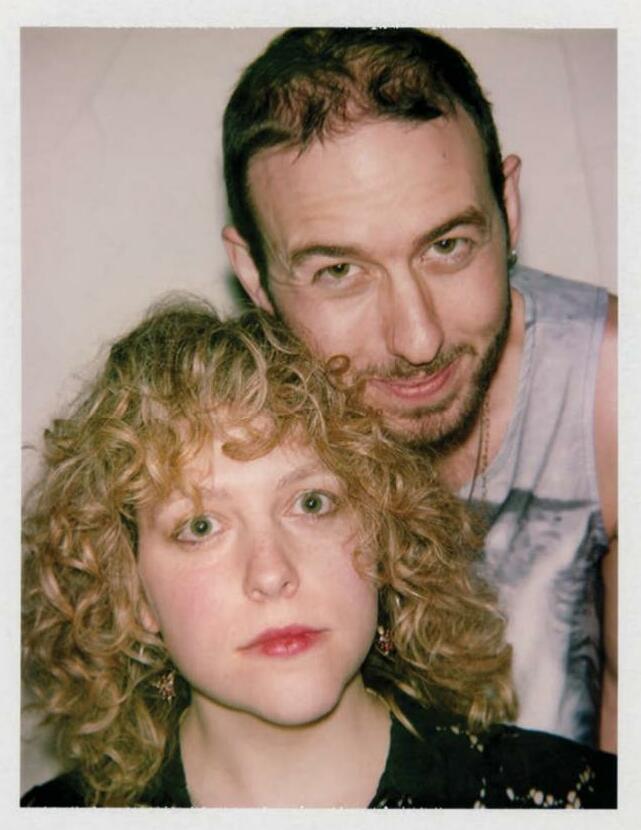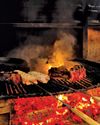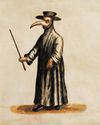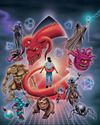
ON A RECENT RAINY NIGHT in Manhattan, more than a hundred people gathered at St. Mark's Church-in-the-Bowery to celebrate the launch of Parapraxis, a new magazine about the century-old practice and theory of psychoanalysis. The party, co-hosted by the journal n+1, primarily consisted of writers, academics, and analysts, most of them young. You could identify some of the analysts by their clothes (fleeces, button-downs) and their jokes ("How many dollars per hour are they charging for this?"). Alex Colston, the 31-year-old deputy editor of Parapraxis, who is training to become a clinical psychologist, set a stack of glossy magazines on a scarred wooden table near the door. He wore a slip that was screen-printed with an image of Freud’s face—not the classic photograph of the white-haired sage with a cigar and the suggestion of a scowl but a portrait of the doctor as a young man, dark-haired and handsome. “It felt gimmicky,” Colston said, “but I can’t get enough of a pun.”
The magazine’s founding editor, Hannah Zeavin, 32, an author, professor, and historian of psychoanalysis, strolled over in a black lace dress and chunky black creepers to pose for a photograph with Colston. Her mother and stepfather, Lynne Zeavin and Donald Moss, both eminent Manhattan psychoanalysts, were in attendance. Moss joked that the editors looked like Freud and Dora, the latter being one of Freud’s most famous patients (a teenage girl whose treatment was an abject failure). The two met on Twitter around 2020 and found themselves talking for hours about psychoanalysis and what they see as its unmatched potential for helping people understand themselves and the world. They liked the idea of a publication where writers could imagine “a psychoanalysis for the 21st century,” as Zeavin put it.
Diese Geschichte stammt aus der January 16-29, 2023-Ausgabe von New York magazine.
Starten Sie Ihre 7-tägige kostenlose Testversion von Magzter GOLD, um auf Tausende kuratierte Premium-Storys sowie über 8.000 Zeitschriften und Zeitungen zuzugreifen.
Bereits Abonnent ? Anmelden
Diese Geschichte stammt aus der January 16-29, 2023-Ausgabe von New York magazine.
Starten Sie Ihre 7-tägige kostenlose Testversion von Magzter GOLD, um auf Tausende kuratierte Premium-Storys sowie über 8.000 Zeitschriften und Zeitungen zuzugreifen.
Bereits Abonnent? Anmelden

LIFE AS A MILLENNIAL STAGE MOM
A journey into the CUTTHROAT and ADORABLE world of professional CHILD ACTORS.

THE NEXT DRUG EPIDEMIC IS BLUE RASPBERRY FLAVORED
When the Amor brothers started selling tanks of flavored nitrous oxide at their chain of head shops, they didn't realize their brand would become synonymous with the country's burgeoning addiction to gas.

Two Texans in Williamsburg
David Nuss and Sarah Martin-Nuss tried to decorate their house on their own— until they realized they needed help: Like, how do we not just go to Pottery Barn?”

ADRIEN BRODY FOUND THE PART
The Brutalist is the best, most personal work he's done since The Pianist.

Art, Basil
Manuela is a farm-to-table gallery for hungry collectors.

'Sometimes a Single Word Is Enough to Open a Door'
How George C. Wolfein collaboration with Audra McDonald-subtly, indelibly reimagined musical theater's most domineering stage mother.

Rolling the Dice on Bird Flu
Denial, resilience, déjà vu.

The Most Dangerous Game
Fifty years on, Dungeons & Dragons has only grown more popular. But it continues to be misunderstood.

88 MINUTES WITH...Andy Kim
The new senator from New Jersey has vowed to shake up the political Establishment, a difficult task in Trump's Washington.

Apex Stomps In
The $44.6 million mega-Stegosaurus goes on view (for a while) at the American Museum of Natural History.